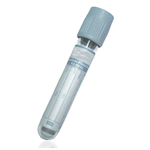Suitable Specimen Types
- Fluoride Oxalate
Sample Processing in Laboratory
Blood samples must be collected on ice and transported to laboratory for centrifugation within 30 minutes of collection. CSF samples do not need to be collected on ice.Sample Preparation
Blood samples must be collected on ice and transported to laboratory for centrifugation within 30 minutes of collection. CSF samples do not need to be collected on ice.Turnaround Time
1 daySample Stability
Seperated plasma may be stored for 3 days at 4°CLactate
General Information
The common cause for increased blood lactate is anoxia resulting from such conditions such as convulsions, shock, sepsis, pneumonia and congestive heart failure. Lactate levels in CSF are increased in bacterial meningitis, and any condition associated with reduced oxygenation of the brain
Lactate is increased in metabolic liver disease, glycogen storage disorders.
Patient Preparation
Patients should not clench and unclench hands before or during phlebotomy. Specimens should be obtained without the use of a tourniquet or immediately after the tourniquet has been applied. If there is any delay in obtaining the specimen or if the initial draw is unsuccessful, the tourniquet should be removed and the blood should be allowed to circulate for at least two minutes before trying again.
Notes
CSF samples can also be used. Please collect these into fluoride/oxalate tube.
Haemolysis interferes with this assay and haemolysed samples will not be analysed.
Reference Range
<16yrs 0.6-2.5 mmol/L (Source : Pathology Harmony Recommendations)
Adult 0.5-2.2 mmol/L (Source : Abbott Diagnostics)
CSF lactate-age related: 1.1-6.7mmol/L (neonates) 1.1-2.4 mmol/L (adults)
Specifications
- EQA Scheme?: Yes
- EQA Status: WEQAS
